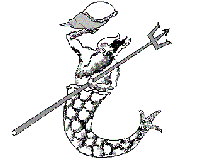All Rights Reserved
|
|||||
|
Author/s
|
Page
|
||||
|
1. MARINE MOLLUSCS
|
|||||
| Mienis, H. K. |
NOTES ON
RECENT AND FOSSIL NERITOIDEA |
1
|
|||
| Singer, B.S. |
DOES DENTALIUM
OCTANGULATUM DONOVAN, 1803 |
3
|
|||
| Heiman E.L., Holtzer E. & Mienis, H.K. |
SHELLS OF EAST SINAI, AN ILLUSTRATED LIST: PECTINIDAE
|
6
|
|||
|
Heiman, E. L. |
SHELLS OF EAST SINAI, AN ILLUSTRATED LIST: CERITHIIDAE |
8
|
|||
|
Heiman, E. L. |
SHELLS OF EAST SINAI, AN ILLUSTRATED LIST: NATICIDAE |
11 |
|||
| Heiman E.L., Holtzer E. & Mienis H.K. |
SHELLS OF EAST SINAI, AN ILLUSTRATED LIST: |
14 |
|||
| Heiman E.L., Holtzer E. & Mienis H.K. |
SHELLS OF EAST SINAI, AN ILLUSTRATED LIST: |
17
|
|||
| Heiman, E. L. | UNUSUAL FORMATIONS IN COWRIES |
20
|
|||
| Heiman, E. L. |
VARIABILITY OF COWRY POPULATIONS20. PALMADUSTA LENTIGINOSA (GRAY, 1825) |
21
|
|||
| Heiman, E. L. | NEW FINDS ON ISRAELI COASTS |
24
|
|||
|
2. LAND-SNAILS AND FRESH-WATER MOLLUSCS
|
|||||
| Schütt, H. & Şeşen, R. |
CONTRIBUTION TO KNOWLEDGE OF THE TURKISH LANDSNAIL IMPARIETULA SEBASTEANA FORCART, 1940 (MOLLUSCA PULMONATA:BULIMINOIDEA, ENIDAE) |
25
|
|||
| Örstan, A. | POSSIBLE HUMAN-ASSISTED DISPERSAL OF LEVANTINA SPIRIPLANA (PULMONATA: HELICIDAE) IN WESTERN TURKEY |
27
|
|||
|
Mienis. H. K.
|
AN UNEXPECTED SOLUTION OF A DESERT SNAIL PROBLEM IN GAZAAbstract: Two problematic samples of Desert snails (Eremina) labeled: near Gaza, Palestine, were most probably collected by I.M. Mackerras in North Sinai, Egypt and the Western Desert at the border of Egypt and Lybia. This scenario emerges from studying the biography dealing with Ian Murray Mackerras, especially the part describing his service in the Australian General Hospital near Gaza, Palestine and elsewhere in Egypt and Lybia from February 1940 until May 1942. |
29
|
|||
|
3. ARCHAEOMALACOLOGY
|
|||||
|
Mienis. H. K.
|
SHELLS FROM THE EXCAVATION OF A CHALCOLITHIC SITE NEAR THE SHOQET JUNCTION, NEGEV Abstract: An excavation of a Chalcolithic site near the Shoqet junction, Negev, Israel, revealed the presence of remains of four different mollusc: two species of local land snails (Xerocrassa seetzenii seetzenii – 6 specimens and Helix engaddensis – 7 specimens), one species of a Mediterranean marine bivalve (Glycymeris insubrica – 4 valves) and one species of a Nilotic freshwater mussel (Chambardia rubens arcuata – 3 fragments). The Glycymeris valves had probably been used as pendants. The reason for the presence of Chambardia is not clear, however, it forms an indication of trade contacts with the Nile region in Egypt. |
31
|
|||
|
Mienis. H. K.
|
SHELLS FROM THE EXCAVATION OF THE NEOLITHIC SITE OF MUNHATTA, JORDAN VALLEY, ISRAEL Abstract: Small fragments of Glycymeris insubrica (1x) and Ostrea edulis (2x) are here reported from the excavation of the Pre-Pottery Neolithic B-site of Munhatta, Jordan Valley, Israel. There is no clue concerning the purpose of these shells or why they have been brought to the site from the Mediterranean Sea. |
33
|
|||
|
Mienis. H. K.
|
MOLLUSCS FROM TWO TEST PITS AT A POTTERY NEOLITHIC SITE NEAR HAZOREA, YIZRE’EL VALLEY, ISRAEL Abstract: Two test pits dug near Hazorea, Yizre’el Valley, Israel, yielded 13 remains of molluscs belonging to eight different species. Four species are of local origin: the terrestrial snail Helix engaddensis (3x) and three freshwater species Melanopsis buccinoidea (4x), Unio mancus eucirrus (1x) and Unio terminalis terminalis (1x). The aquatic species originated most probably from the nearby Qishon River. The remaining four species are all from the Mediterranean Sea: Erosaria spurca (1x), Phalium granulatum undulatum (1x), Hexaplex trunculus (1x) and Glycymeris insubrica (1x). Three shells showed signs of manipulations: the Erosaria had been turned into a bead by removing the dorsum of the shell, the Purple snail Hexaplex into a pendant by making a hole in the body whorl and the Helmet shell Phalium into a so-called Cassid lip. |
34
|
|||
